
Born in Peterborough in 1996 and graduating from the RCA in 2020, Olivia Sterling has carved out a distinctive niche in using paint to address questions of blackness and whiteness in twenty-first century Britain. Colour, in her work, is both hedonism and neurosis. Her Day-Glo pigments and swooping, comic-book outlines are a raucous pleasure for the eyes; yet her signature ‘tagging’ of colour blocks with letters and numbers points to the obsessive compartmentalisation of skin tones and identities, a minefield of labels that invokes the shadow of racialised discourse. The use of everyday settings and subjects – which seem to spill over the edges of Sterling’s zoomed-in frames – points to the subtle ways in which even anodyne objects and scenes are encoded with structures of othering and difference while stressing the fact that this is a drama that continues beyond the canvas.
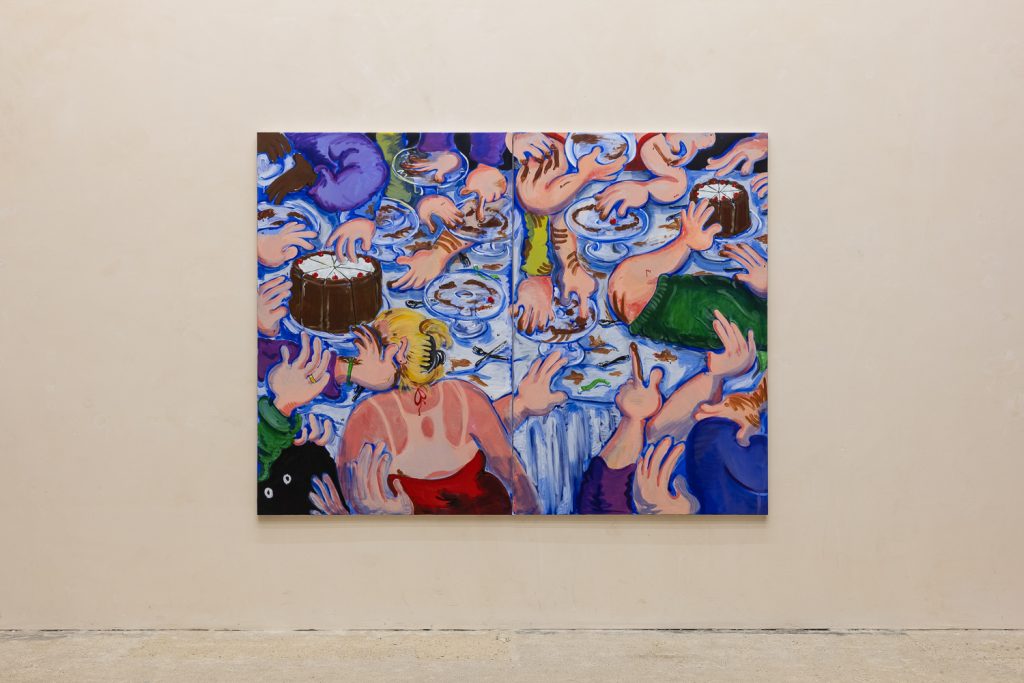
Goldsmiths CCA September (2021), selection.
In your paintings, you cleverly address questions of blackness and whiteness through a slapstick manner focusing on twenty-first century Britain. How do you approach colour?
Thank you! I try to approach colour through trying to look at it as frankly as possible both with a post-colonial outlook on top of a white supermacist outlook. This sounds quite harsh but I mean that by rolling around in the ideas that whiteness has given us – that white people are in the centre, others are in the margin, that your skin colour has connotations to your character. I play with this idea and often try to make fun of it – hopefully exposing the innate absurdity that comes with visual-based discriminations. Though of course all discriminations are absurd. However, as this is quite a serious subject matter that can’t always be fully understood by those who don’t experience it, it is good to use food symbolism – especially because food is also colour coded. We understand when something is expensive or ripe by its colour so I try to channel this into my painting.
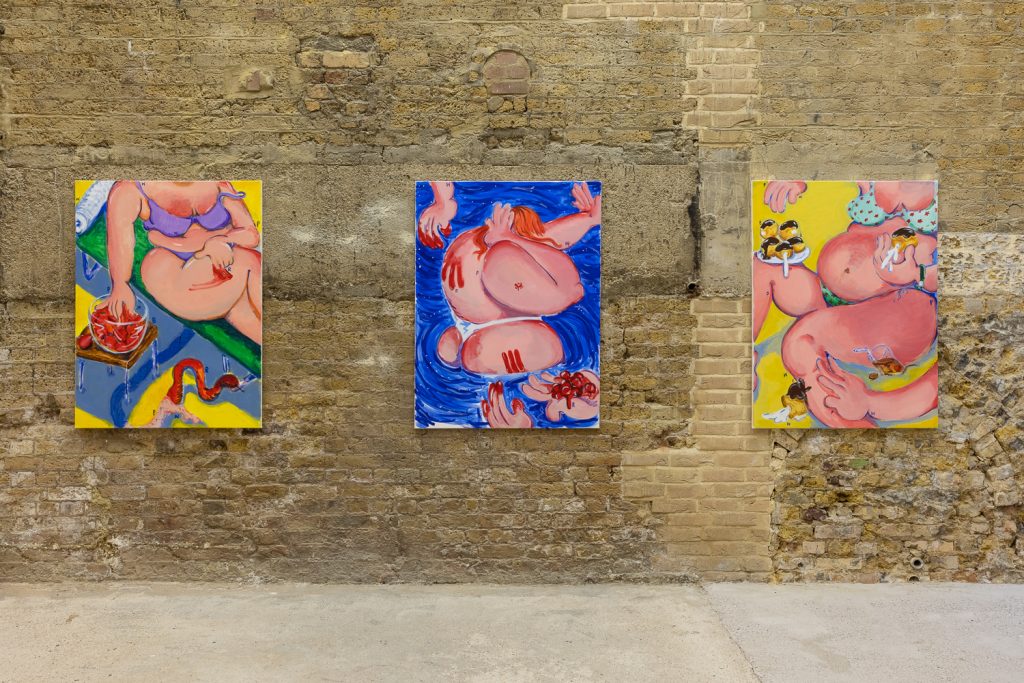
Goldsmiths CCA September (2021), selection.
In your body of work you often juxtapose the playfulness of comic-strip scenes with the intangibility of memory. Can you talk a little more about the choice of objects, food, and the use of letters?
My aim is more to provide a viewer with something to latch onto in order to enter the painting and this is true of the letters as well. These are both quite practical in function. The letters (often ‘w’ or ‘b’) hang over certain colours (white or black), drawing attention to the actual colour rather than ‘white’ or ‘black’ which is polarising, whereas the reality is that skin colour is a spectrum regardless of the special preference that has been placed on ‘white’.
In terms of food, it runs along the same lines. For example, I have been having an obsession with profiteroles recently – white inside, tan coloured on surface and covered in brown chocolate – whiteness at one end, everyone in the middle and then blackness at the other end. The spectrum is captured in one dessert. The colour of the food will dictate whether it lands into one of my paintings. It just so happens that a lot of British food is odd looking and made up of colours that can be related to race or femininity, which are my key themes. Then also it is easy for work to feel playful and therefore nostalgic as childhood is very messy, sloopy and full of liquids – food fights, messy faces and eating with your hands. As my figures are often playing with food, I understand that this would give a sense of playfulness.
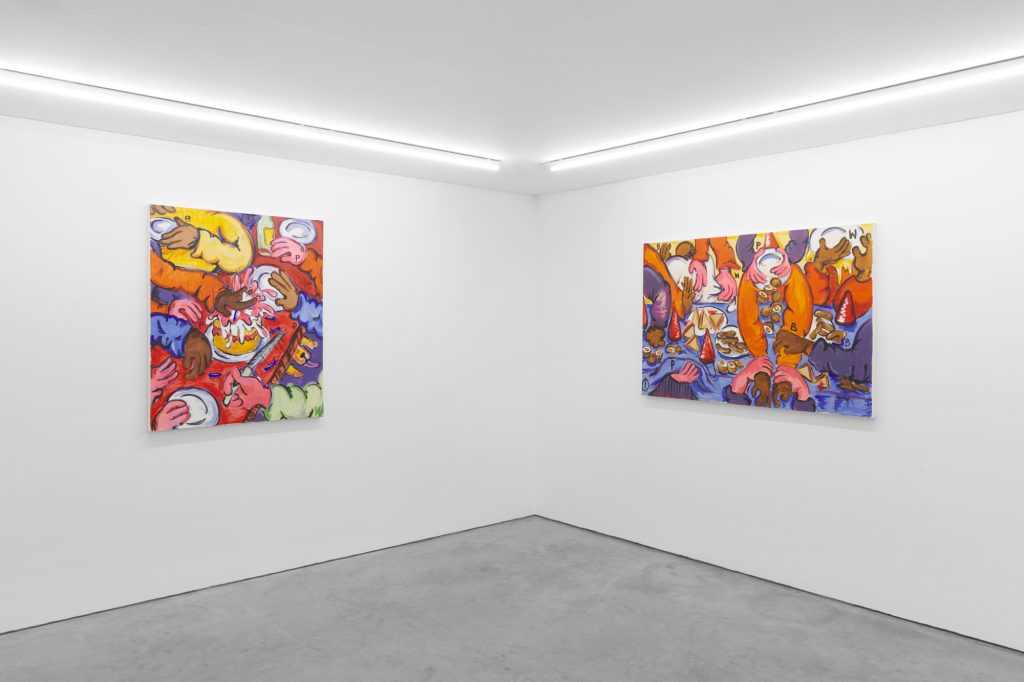
Olivia Sterling Installation.
You don’t depict any faces on purpose it seems, why is that?
I don’t, and it is becoming a fun game with myself to make interesting compositions that don’t contain faces – I believe the ambiguity created by the lack of facial expressions really enhances the paintings. That we can only assume if the tangled bodies are hurt or distressed and this allows for the figures to become representatives of ideas rather than autonomous individuals. The bodies themselves become symbols of their race much like how cream and milk are often symbols for whiteness in my work.
How do you create the composition in your work? Do you crop imagery from a larger scale drawing or idea?
I will often go through phases of obsessing over flat imagery, where I study their compositions, take the successful parts and form a painting. This has happened most with 18th century caricature but it also happens a lot with religious imagery e.g book of hours illustrations or bestiary drawings.
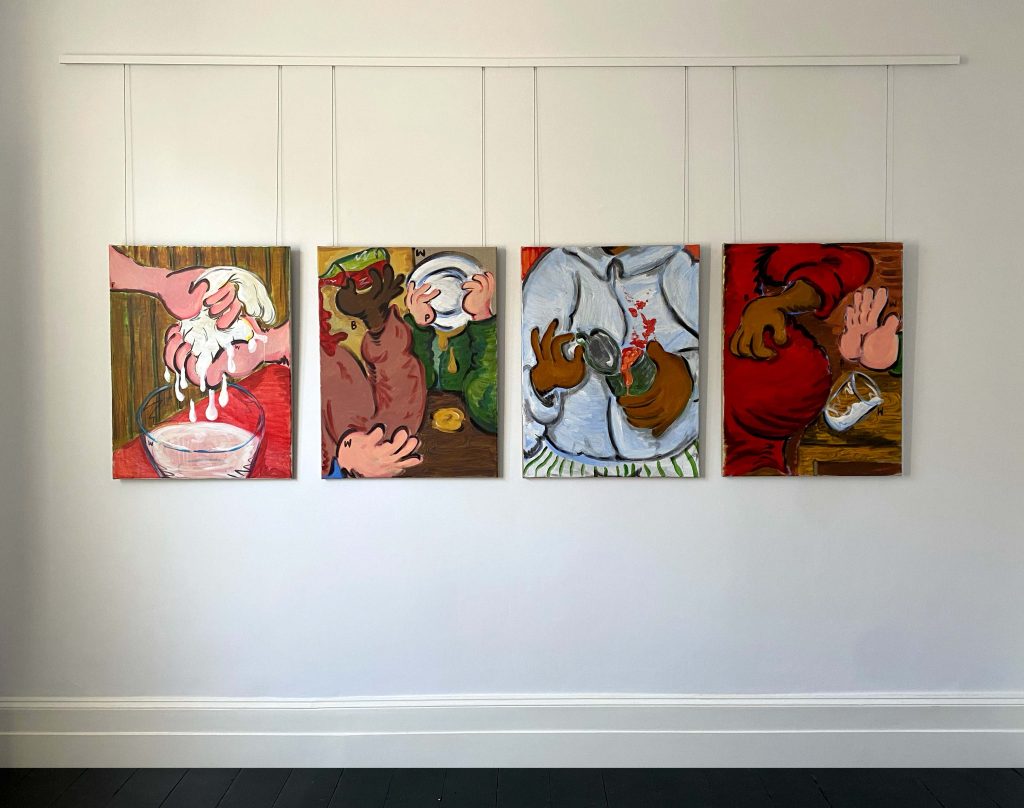
Table Salt, Fores Residency (2021).
If you could invite anyone (living or dead) who would you invite for dinner? (you can list up to 4-5 people).
Wowie, probably four people from an historic event like maybe people who used to watch hangings hundreds of years ago, just to hear the motivations of why you would stand there to watch someone get killed.
What drives you to paint?
Painting helps me process a lot of things, especially my own identity as a Black British person. So, rather selfishly I paint to understand what is going on around me, to paint it in a way that reminds me how illogical and absurd some norms and values are that surround us.
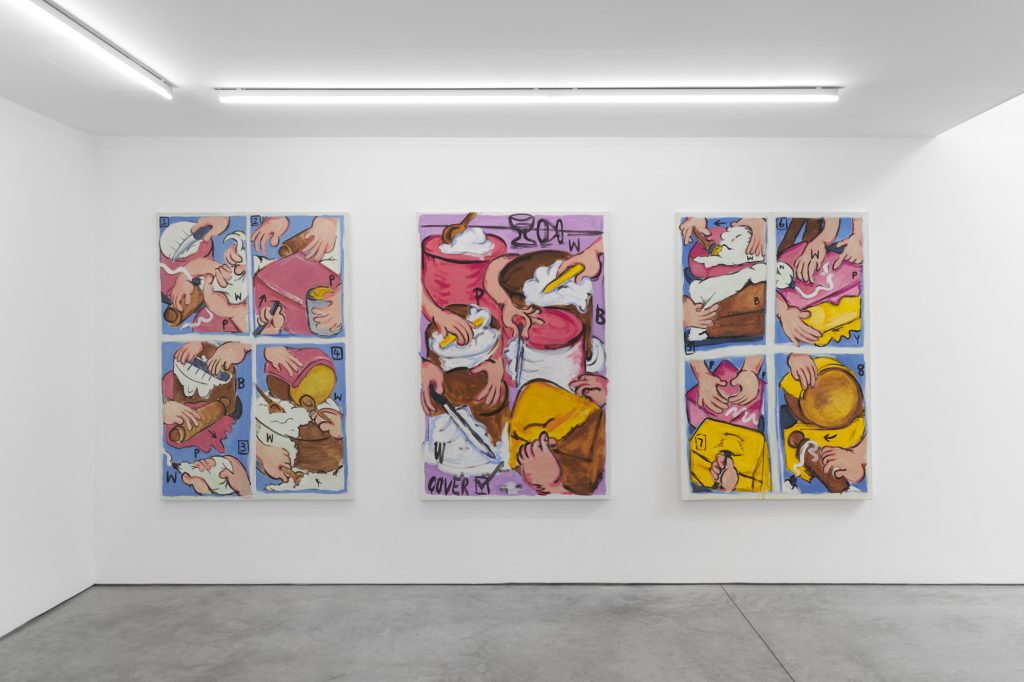
White Bread, Cob Gallery (2021).
I really love that we connected through the Drawing Room’s organised talk which I moderated exploring food politics through drawing. What is your favourite meal?
Well, sadly it is obviously cream and cake. I really love a perfect vanilla flavour so panna cotta, basque cheesecake, creme caramel and any dessert that does vanilla well is my favourite. Then beyond that I really like meat and cheese together – my dream is to dip gammon (already odd and arguably gross) into a camembert.
What are you currently working at the moment?
I am currently painting for a solo show in Gothenburg, and painting more table compositions.




